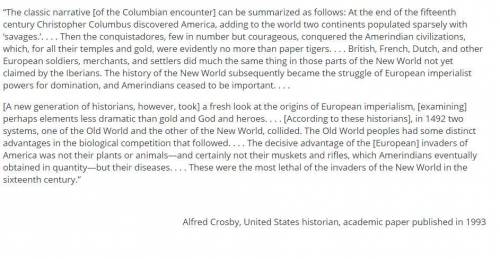 5
5 The correct response is Option A: Candidates from the same party ran against each other.
Explanation:
The presidential elections of 1800 were both significant and controversial because a candidate from the Democratic-Republican party defeated the incumbent Federalist Party. This event is sometimes called the "Revolution of 1800." Thomas Jefferson of the Democratic-Republican Party defeated the Federalist President John Adams and signified a political realignment that the Democratic-Republican leadership would dominate in the ensuing decades. Prior to the ratification of the 12th Amendment in 1804, the electoral college voters did not specify on their ballot if they were voting for president or vice present and so Jefferson and his running mate Burr actually tied. Burr allowed the election to be decided by the House of Representatives and it came down to a tense vote where it came up 36 times in a draw (8 votes for Jefferson, 6 for Burr and 2 abstentions when 9 was needed to win) and only after Hamilton was able to lobby and change the vote of James Bayard of Delaware was Jefferson elected.
 5
5 The correct response is Option A: Candidates from the same party ran against each other.
Explanation:
The presidential elections of 1800 were both significant and controversial because a candidate from the Democratic-Republican party defeated the incumbent Federalist Party. This event is sometimes called the "Revolution of 1800." Thomas Jefferson of the Democratic-Republican Party defeated the Federalist President John Adams and signified a political realignment that the Democratic-Republican leadership would dominate in the ensuing decades. Prior to the ratification of the 12th Amendment in 1804, the electoral college voters did not specify on their ballot if they were voting for president or vice present and so Jefferson and his running mate Burr actually tied. Burr allowed the election to be decided by the House of Representatives and it came down to a tense vote where it came up 36 times in a draw (8 votes for Jefferson, 6 for Burr and 2 abstentions when 9 was needed to win) and only after Hamilton was able to lobby and change the vote of James Bayard of Delaware was Jefferson elected.
 6
6 Candidates from the same party ran against each other.
Explanation:
 26
26 Candidates from the same party ran against each other.
 101
101 B they tied
Explanation:
B they tied
Explanation:
 4
4 The correct answer to this open question is the following.
Unfortunately, you did not include the two maps. Without them, we do not know your specific reference.
However, trying to help you and after doing some deep research, we can say the maps portray the Spanish, British, and Dutch trade maritime routes from 1750 to 1850. The other map shows the many trade routes in 2010 that practically crossed all over the world.
That is why we can answer that one significant reason for changes in the patterns of global economic interactions from circa 1750 to circa 2000, as illustrated by the two maps are the technology and modernization of means of transportation that today include land, air, and sea.
Trade has been the activity that has developed most rapidly all over the world in those years. Today, there are international organizations and free trade agreements that connect the world through trade.
More people on the planet started to require more products from all places and developed nations exploited natural resources and raw materials and produced more and better goods in their industrialized cities that were exported.
 2
2 see explanation and i got an a btw.
Explanation:
b. The development of diseases in the sixteenth century would support the arguments of the “new generation of historians in the second paragraph because the “new generation of historians” would look at this in relation to european imperialism and see the impact of the european diseases like smallpox that would plague places like modern day united states because of the european immunity, but lack of native immunity.
c. The “biological competition” contributed to the European imperialism in the Americas by creating a survival of the fittest environment where the europeans brought in diseases like smallpox that had plagued europe generations ago, but infected the native populations and weaken them in both their numbers and their strength, which enabled the Europeans to take control of the new world and develop a dominance while the natives were fighting a disease. This was “biological competition” because the Europeans' immunity was assisting them in fighting the natives' lack thereof.


It will provide an instant answer!
